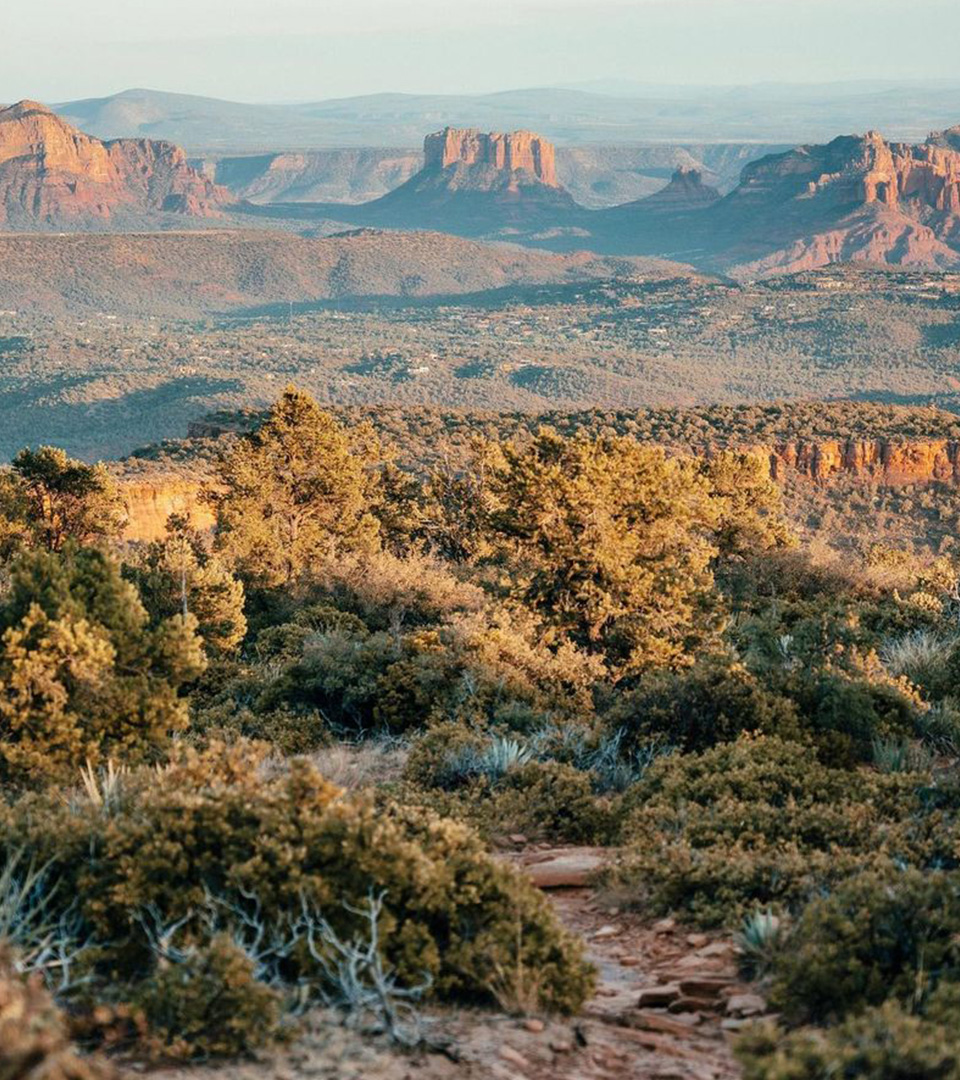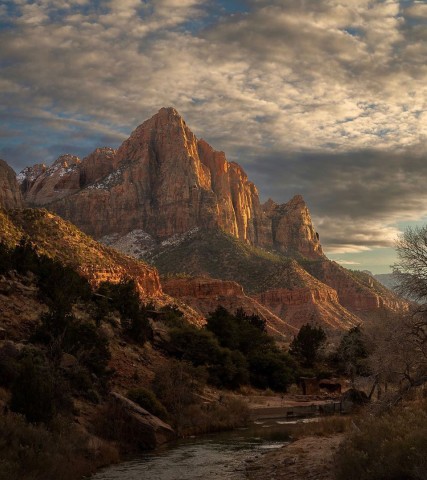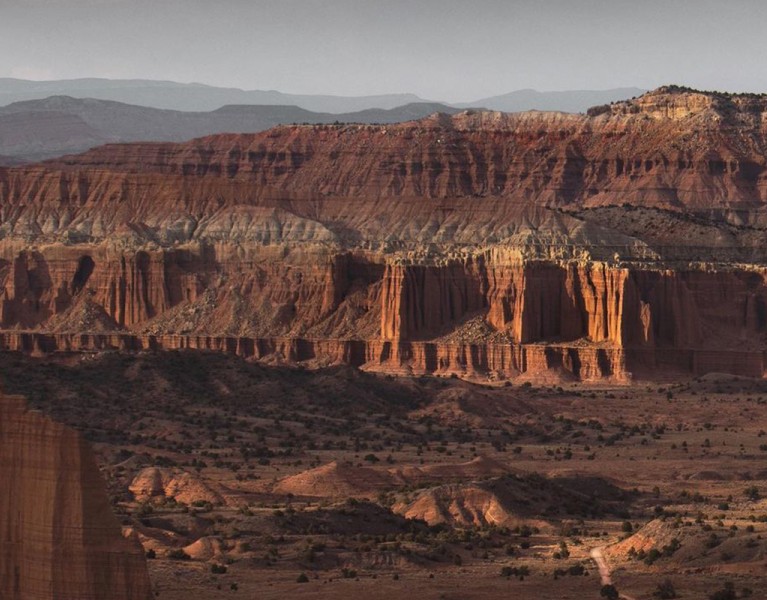
4 Snakes You Will See When Camping & What to Do
Table of Contents [Show]
Learn the five most important dos and don’ts for dealing with snakes in your campsite.
Depending on who you are, the phrase “adventure in the great outdoors” may conjure images either of beautiful mountains and forests or horrific accidents and injuries.
The truth is, both of these things are inevitable facets of interacting with the wilderness – there is great beauty, and there is also great risk.
One of the risks many people have the most anxiety around is wild animals, snakes in particular.
This is a real danger, though not perhaps as widespread as westerns would have you believe.
In this article, you’ll learn what you should and shouldn’t do if you encounter a snake while camping.
Don't panic or try to kill the snake.
Many people find snakes to be inherently scary animals, and there is some good reason for this. Some species can be incredibly dangerous and even fatal to humans that encounter them, and some are either so venomous or so powerful that once they get you, there’s not much you can do.
This, however, is emphatically not the case in North America, where the vast majority of snake species are non-venomous, and the ones that are do not pose a major danger to humans. This doesn’t mean there’s no danger or that you shouldn’t take precautions, but recognize that a fear of snakes is rational, but not justified.
We’ll talk about how to identify snakes more later, but even if you’re fairly certain you have a venomous snake on your hands, don’t try to kill it. This is unnecessary, especially for an animal whose habitat is already under threat, but it also puts you at increased risk of being bitten the more you interact with the snake.
Likely, as soon as it realizes there are humans around, the snake will leave of its own accord pretty quickly.
Do get a good look and try to identify the snake
There are two good reasons to do this. Firstly, since it’s unlikely any snake in your campsite is actually venomous or going to bite you, you have a great opportunity to observe a fascinating creature in the wild and try to become more familiar with some of your fellow woodland creatures. Secondly, if anyone does get bitten, it’s helpful, but not necessary, to know what kind of snake it was.
Don’t lose time after a snakebite trying to see or catch the snake, but if you can snap a picture or offer a definitive ID, it will be helpful for medical personnel. Luckily, there are only a few species of venomous snake in North America.
- Coral snake – The coral snake is easily identified by its red, black, and yellow banded coloration. These snakes are reclusive and rarely bite humans.
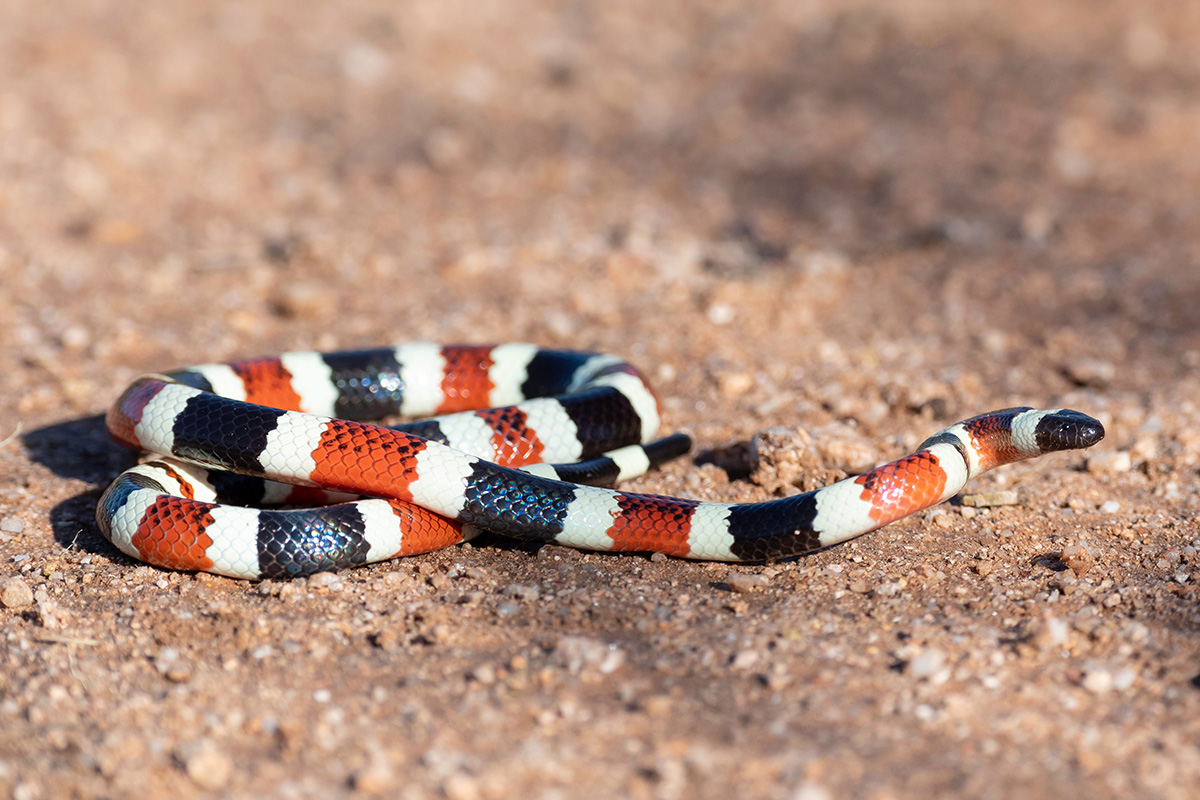
- Copperhead – Adult copperheads can be identified by the hourglass-shaped markings on their brown bodies. Babies and juveniles have a distinctive yellowish-green tail tip.
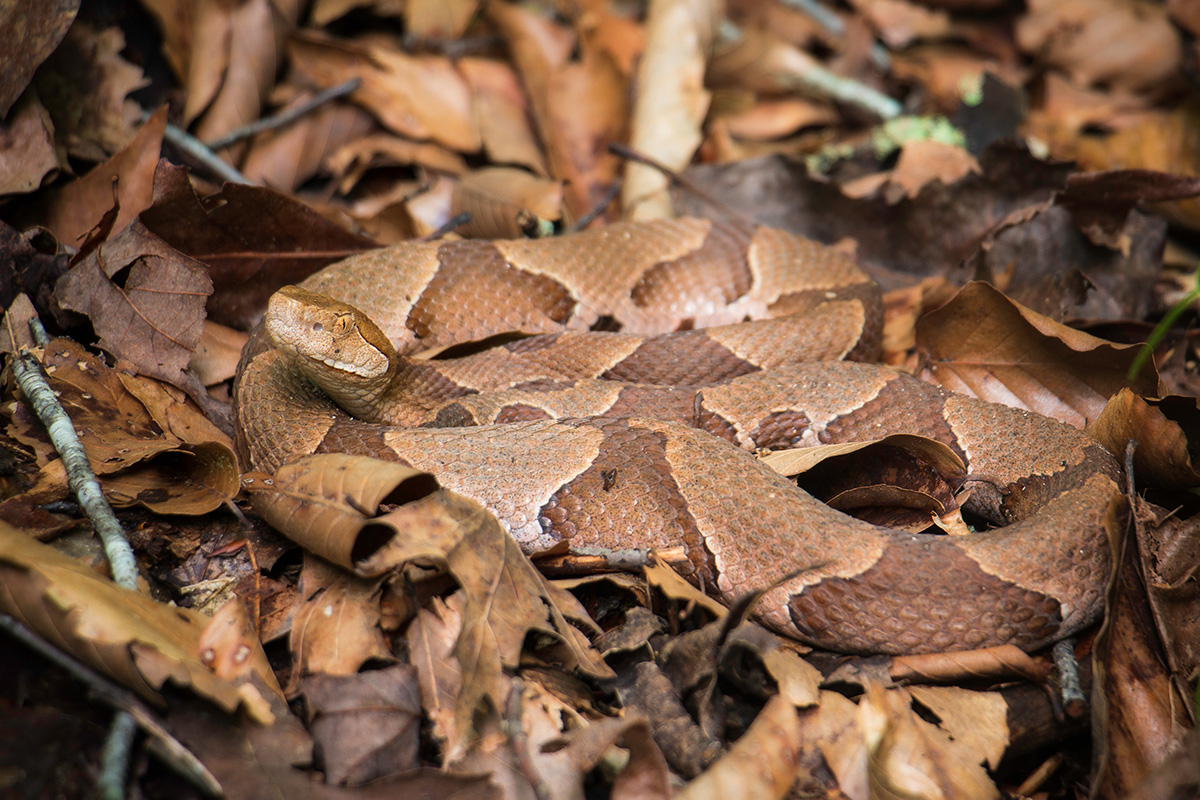
- Cottonmouth – Cottonmouths are semi-aquatic and mostly found near water, giving them the colloquial name of water moccasin. They can be several shades of brown, grey, or tan, but are mostly very dark, almost black.
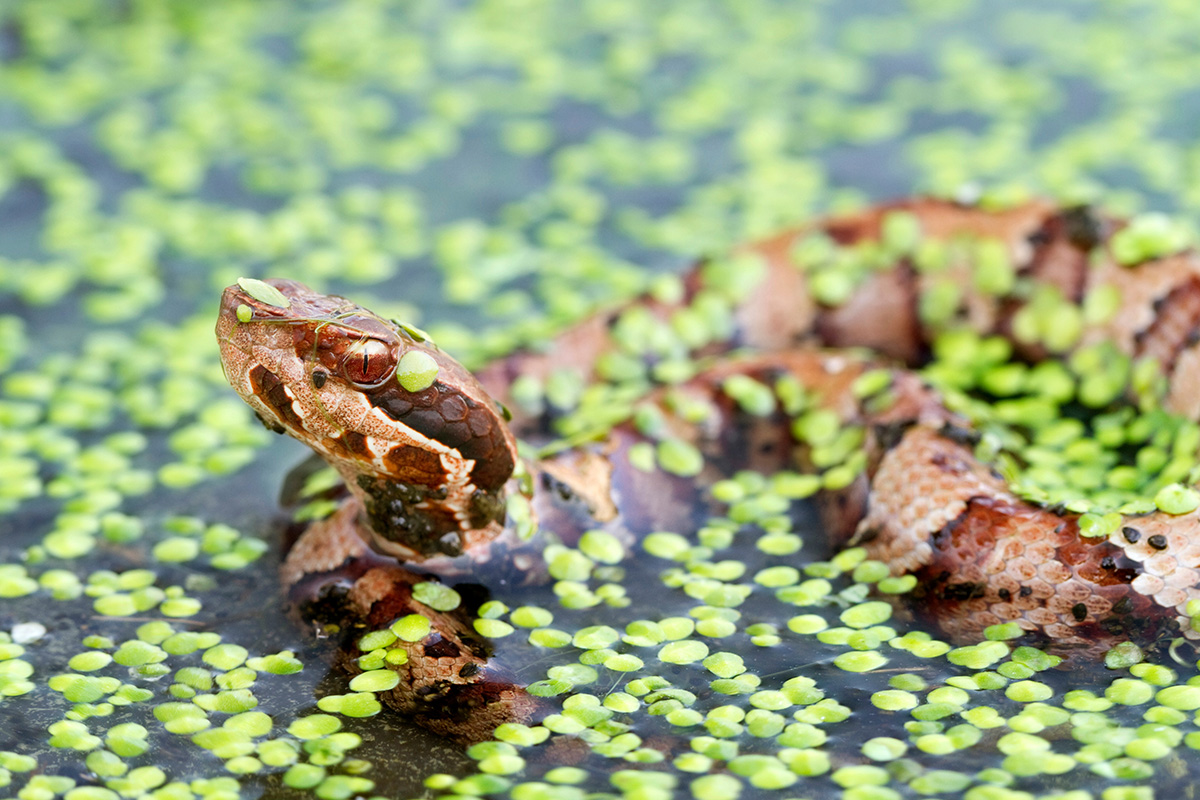
- Rattlesnake – There are five species of rattlesnake native to the United States: the eastern and western diamondback, the timber rattlesnake, the prairie or plains rattlesnake, and the massasauga. These species all have unique colorations, but are generally shades of black, brown, or tan with camouflaging patterning and, of course, can be identified by their eponymous rattle.
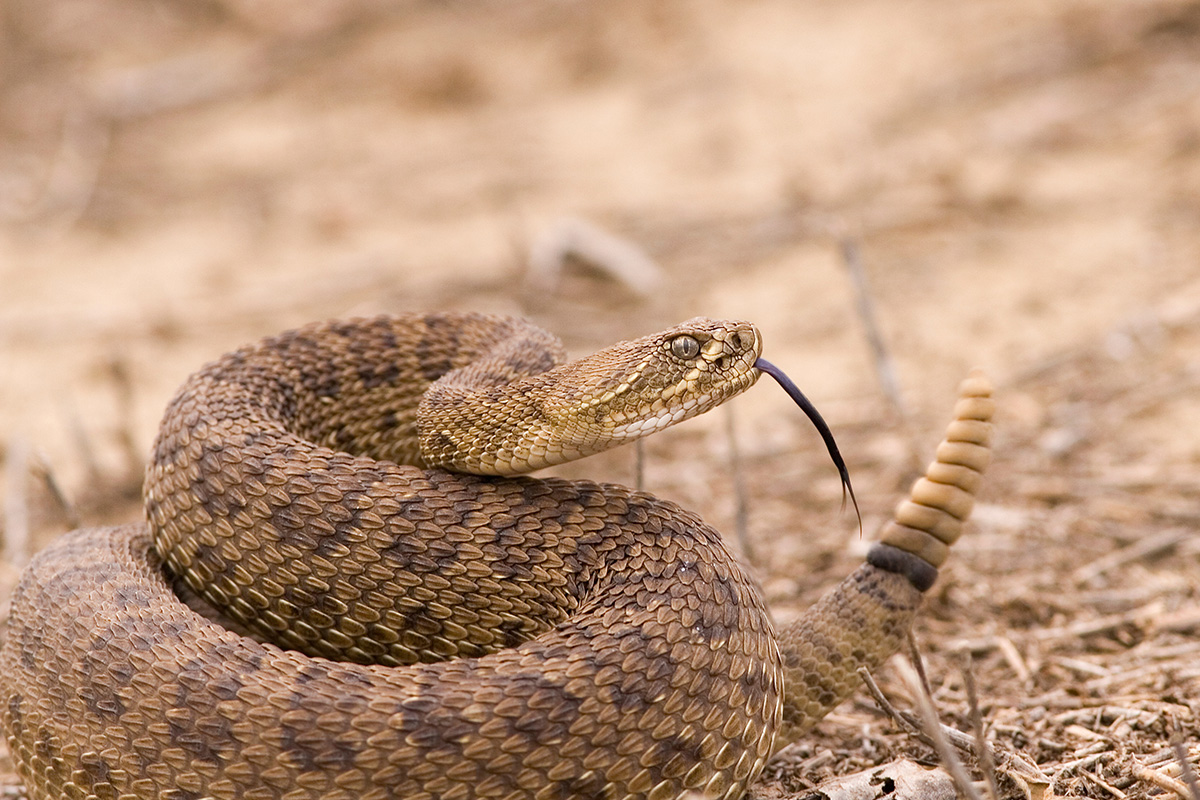
Don't try to pick it up or move it
With very few exceptions, none of which live in North America, snakes do not view humans as a food source. Instead, any time a small venomous snake bites a human, it is a defensive bite, administered because the snake believes the person is a threat.
The fact that snakes view humans as a serious threat is actually attested by the relatively small number of snakebites that hikers and campers suffer every year; if snakes were not afraid of humans or were seeking us out to bite us, there would be many, many more.
However, producing venom requires a lot of energy and nutrients from the snake’s body, so it will try to conserve that venom as much as possible to use on prey, not defense, even to the point of delivering a dry bite, where no venom is even released. Given this reluctance of snakes to bite, it should be no surprise that the vast majority of snakebites happen when someone attempts to pick up, handle, or kill a snake.
Even if you’re certain a snake is non-venomous, picking it up can stress out or even injure it unnecessarily. You can also still sustain a bite, which will be painful and can become infected, even if there’s no venom in it. Snakes, like all wild animals, should be left alone and not handled.
Do be prepared to give basic first aid
It’s a common saying that the two most important first aid supplies in event of a snakebite are your cell phone and your car keys, and this is true. If you only take one thing away from this article, it should be this:
If you suffer a potentially venomous snakebite, seek medical attention as soon as possible.
Any hospital you visit in North America will have antivenin or antivenom on hand for any local venomous snakes that may have bitten you. Quick administration of antivenom and medical care can save your life and greatly reduce your risk for serious side effects, including infection and nerve damage.
That being said, there are still a few basic steps campers can take to reduce the damage a snakebite does before they reach the hospital.
- Call 911 or poison control as soon as you have cell phone service. They can walk you through any first aid steps, help you stay calm, and coordinate with the nearest hospital.
- Remove any jewelry or tight clothing around the bite area. Swelling is a common symptom of snakebite.
- Clean the bite with soap and water to prevent infection.
- Wrap a clean bandage loosely – loosely! – around the wound. This is to keep it clean and dry and to absorb any bleeding; it is not a tourniquet. Never apply a tourniquet to a snakebite.
- Elevate the bite to heart level or higher.
- Try to stay calm. Panicking will elevate your heart rate and cause the venom to circulate more quickly through your body.
Do pick a campsite that is less likely to be attractive to snakes
If possible, find a campsite that isn’t closely surrounded by low bushes or other good hiding spots. Being further from water will help you avoid cottonmouths. Most importantly, keeping a clean campsite will help prevent encounters with snakes and wild animals of all sorts. Clean up after your meals and store your food away from your tent, packed up to reduce its scent.
Snakes can be scary, and they can also be highly dangerous is treated without the proper caution, preparedness, and knowledge. However, they should never be a reason not to visit the great outdoors. Remember, snakes may be common, but dangerous snakebites are rare, and even rarer among campers who know their stuff and come prepared to take the bad with the good in facing the adventures the wilderness has to offer.
Written by David Thomas.
